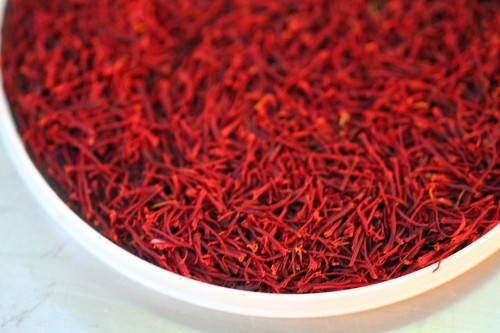Persian Saffron
If you have been reading this blog, it is no secret I’m a huge fan of what I think is one of the more alluring spices out there….saffron. A tiny pinch of these little stigmas from the Crocus flower can completely transform a dish, infusing savoury and sweet foods alike with its intoxicating perfume. For me, saffron represents a childhood memory – the unforgettable taste of seviyan, a sweet pudding made with vermicelli flecked with cardamom and sultanas that was a treat (or special request!) my Mom would make. .
When people think of saffron, there is usually a close association with the Spanish sort. The reality is Kashmiri and certain Italian saffrons, though not marketed as much as Spanish saffron, are the highest quality and the most potent in terms of aroma and color. Persian or Iranian saffron (my saffron of choice) falls in right after these and is as good as (if not better) than the best saffron from Spain.
Anyway you slice it, if you want good saffron, you’re going to have to shell out! Each strand is plucked by hand for goodness sake. But the last thing you want is to spend on a spice and then have it lose its flavor, so I always think about longevity and rationing when buying a spice….The thing that distinguishes Persian saffron is that it has a lower moisture content, which means it keeps for a longer period of time and also crushes easily into a powder (so you can use less). It easily infuses a dish with its color as the small particles disperse more easily.
Although my childhood memory was a sweet saffron dish, here in my recipes, I’ve done nothing but add it to savoury dishes – fried chicken, saffron & roasted garlic spaghetti squash gratin, and shakshuka to name a few (I’m sure there are more). Saffron is often “bloomed” first, soaked in a liquid before being added to a dish. It blooms easily in a warm liquid like milk, cream, or stock as well as alcohol and not as easily in fats like oil or butter. I would love to hear how you incorporate saffron into your dishes so please share!


